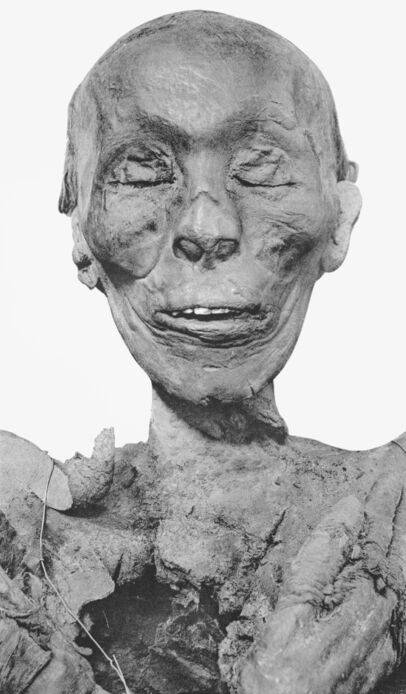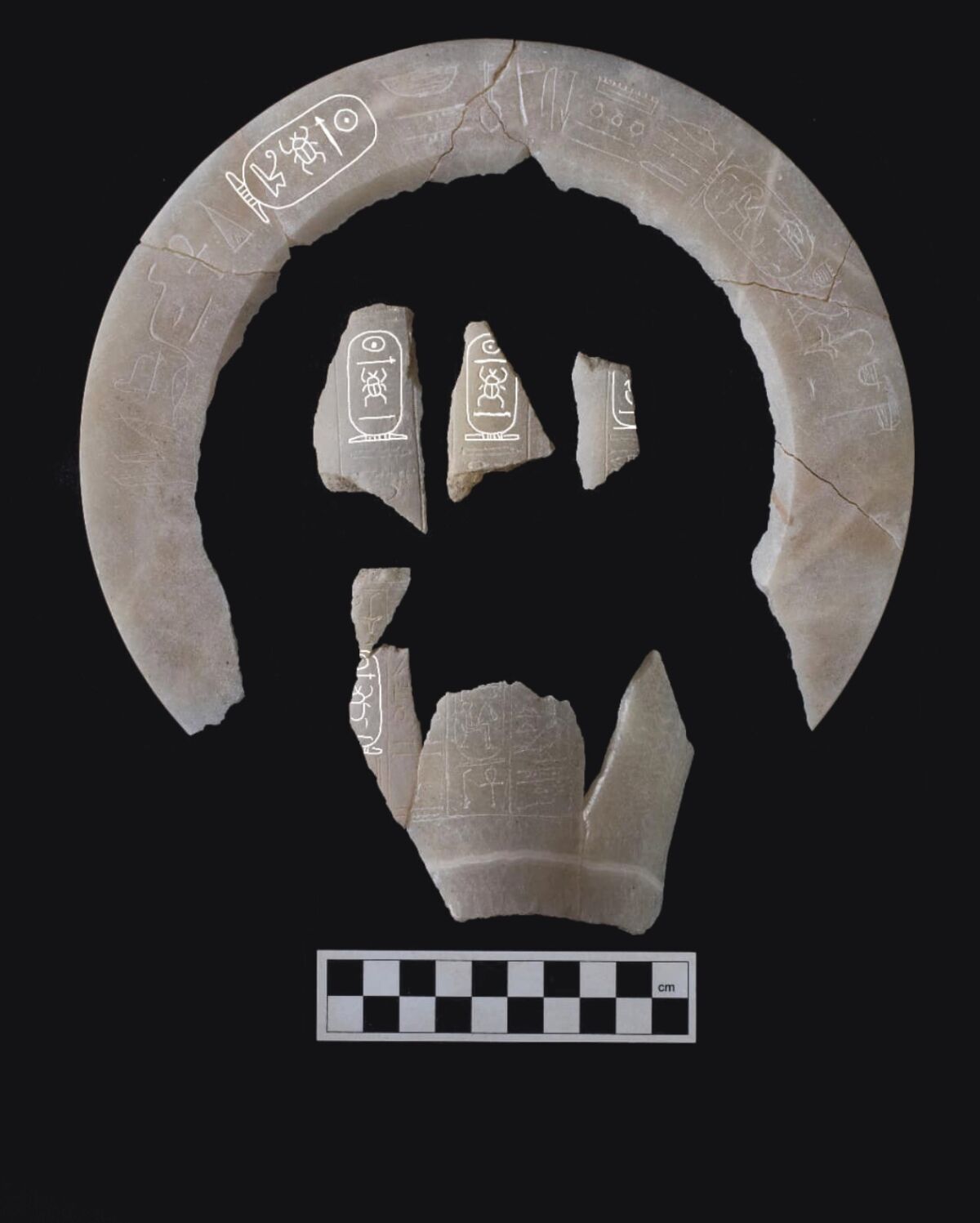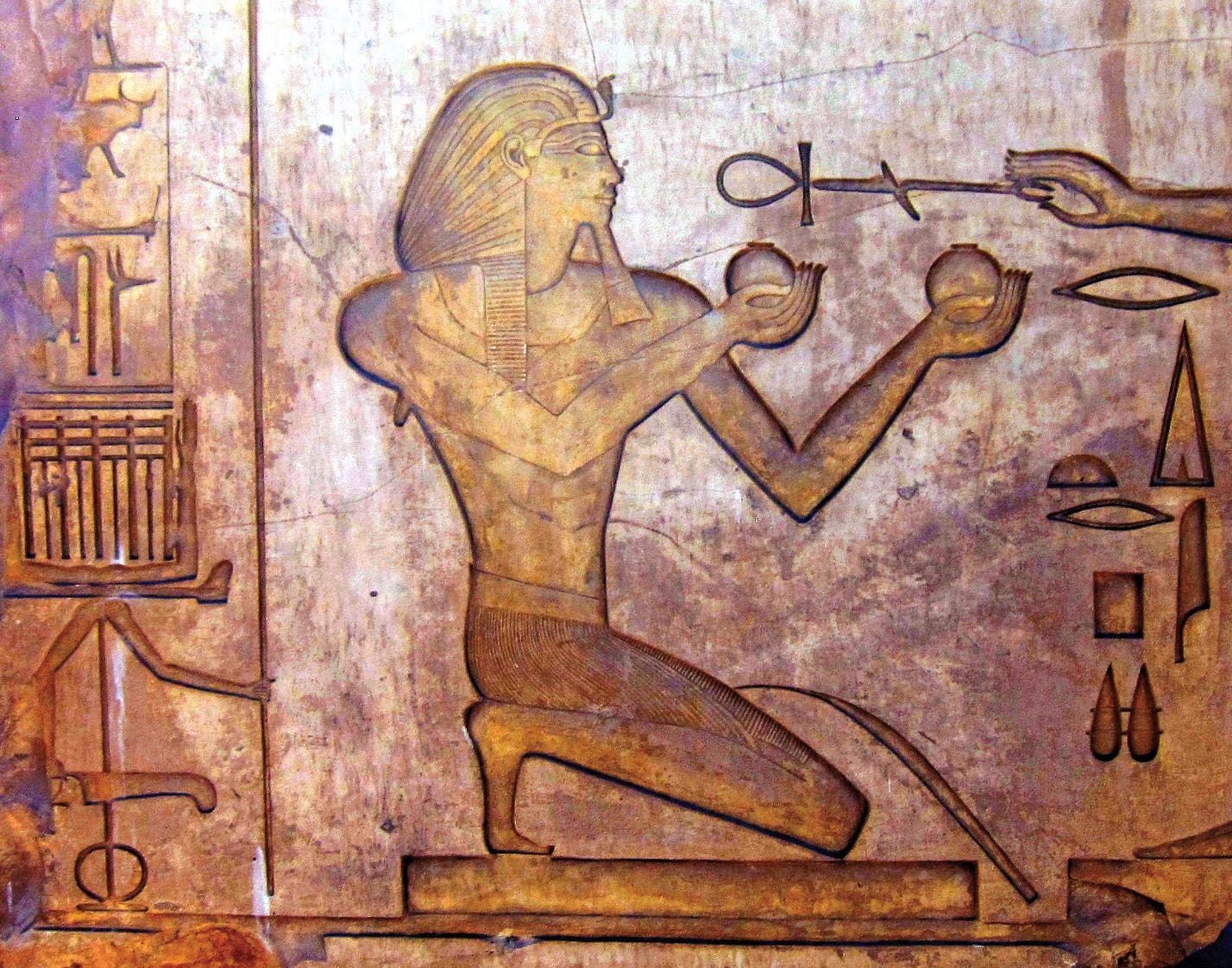The ancient Egyptians took the afterlife very seriously, as evidenced by how they preserved and “buried” the dead. Take the pyramids, for example. The Great Pyramid of Giza once stood at 146 meters tall. According to Encyclopedia Britannica, it’s estimated it would have taken 20,000 workers 20 or more years to build this massive structure. According to an nbc News report, it could have cost the equivalent of $5 billion in today’s value to construct. That’s a massive amount of effort, time and cost for the burial of one man.
One thousand years after the construction of the Great Pyramid, a new method of burial was introduced: rock-cut tombs in the side of a cliff. Although not as grand externally, these tombs spared no expense on the inside. Just the gold on Pharaoh Tutankhamen’s sarcophagus is estimated to have a value of $3 million.
Tutankhamen’s tomb was a special case in which most of his treasure remained untouched. Most tombs have been looted and the treasures taken. But even still, we have evidence of how valuable a tomb was to ancient Egyptian culture. Consider the intricate wall paintings, ceiling designs and the time and effort expended to cut corridors, storerooms and chambers into solid bedrock.
This makes the discovery of a tomb something special—and rare. In the past 85 years, only three pharaonic tombs have been discovered—and one of them was found just this year.
Lost Tomb—Found
On February 21, the Egyptian Ministry of Tourism and Antiquities announced what it called “a major archaeological breakthrough”: the discovery of the royal tomb of Pharaoh Thutmose ii. This is the first discovery of a New Kingdom Period pharaoh’s tomb since the world-
famous discovery of King Tutankhamen’s in 1922. The New Kingdom Period (circa 1550–1070 b.c.e.) spanned three dynasties (18th to 20th) and was one of ancient Egypt’s most illustrious eras. The importance of the New Kingdom Period in ancient Egyptian history makes this discovery all the more remarkable.
In “Rediscovering Egypt’s Golden Dynasty,” Jason Urbanus wrote, “The New Kingdom …, which many scholars believe was the cultural and artistic zenith of Egyptian civilization, was an especially prolific period” in Egyptian history. And it all started with one man: Ahmose i.
Ahmose i, on the scene during the mid-16th century b.c.e., unified Egypt after the division of the Second Intermediate Period (circa 1700–1550 b.c.e.) and “ushered in a period of unparalleled prosperity” (ibid). He was the founder of the 18th Dynasty (1550–1300 b.c.e.)—one of the greatest dynasties in the New Kingdom Period.
During the 18th Dynasty, Egypt experienced a golden age, not just in wealth and material prosperity but also in military strength. In 1504 b.c.e., Thutmose iii came to power. He was the sixth New Kingdom pharaoh and has been called the “Napoleon of Egypt.” He conducted 17 military campaigns and presided over an era in which “[t]he prestige of Egypt had never been so great” (Encyclopedia Britannica).
This is one of Egyptian history’s most important epochs. To find a royal tomb of a pharaoh who ruled during this period is an especially noteworthy discovery. In fact, Thutmose ii’s tomb was one of the few “lost tombs” of the 18th Dynasty—and now, it has been found.
While making headlines this year as a “new” discovery, it was actually first published in October 2023. British archaeologist Piers Litherland, director of the British-Egyptian team that discovered the tomb, published the discovery in Egypt Exploration Society’s magazine Egyptian Archaeology. In that publication, he wrote, “[A] tomb of Thutmose ii does indeed seem to have been found.”
While the identification of the tomb was nearly certain at that time, the February 2025 press release was more dogmatic: “[A]s excavations progressed this season, new archaeological evidence confirmed that the tomb belonged to King Thutmose ii.”
Before digging into how this cave was identified, let’s examine what we know of Thutmose ii and his reign.
The Short Reign
Thutmose ii (1512–1504 b.c.e.) was the son of one of the 18th Dynasty’s greatest pharaohs: Thutmose i (1526–1512 b.c.e.). Thutmose i expanded Egypt’s territory and conducted many building projects, including an expansion of the Karnak Temple.
Compared to his father, Thutmose ii’s accomplishments are less extensive. Having died at a young age, he had a short reign, which may have lasted only three years; though some believe he may have reigned for eight years. In the first year of his reign, he put down a revolt in Kush. He recorded an account of this on the Aswan Inscription.
Discovered in Aswan in southern Egypt, this artifact was first published by Egyptologist Karl Richard Lepsius in the late 1800s. The inscription reads: “As I live, as Ra loves me, as my father lord of the gods praises me, I will not leave a male alive.’ … [T]his army of his majesty overthrew these foreigners; they took the life of every male according to all that his majesty commanded; excepting that one of those children of the prince of Kush was brought alive as a live prisoner with their household to his majesty ….”
Beyond giving insight into one of Thutmose’s few campaigns, the Aswan Inscription bears an interesting historical account from a biblical archaeology perspective: Killing the males of enemy peoples closely matches the practice described in Exodus 1:22—when the pharaoh commanded that all firstborn Hebrew males be killed. Although Thutmose ii’s inscription would have been over a decade after the Exodus 1 account, it shows that such treatment of conquered peoples was an Egyptian practice around roughly the same time period as the biblical account.
For a full comprehensive explanation of the dating of this time period and the pharaohs surrounding the exodus, I highly recommend you read Let the Stones Speak contributing editor Christopher Eames’s article “Who Was the Pharaoh of the Exodus?”. But in the briefest of summary: 1 Kings 6:1 says that 480 years occurred between the Exodus and construction of Solomon’s temple, which began in 967 b.c.e. That puts the Exodus at 1446 b.c.e. and the birth of Moses at 1526 b.c.e.—the year Thutmose i began his reign.
Thutmose ii began reigning around 1512 b.c.e. This would put Thutmose on the scene at the same time Moses was being brought up as a prince of Egypt. This then also gives interesting parallels for a prominent female figure on the scene in Egypt at this time—a pharaoh’s daughter, which is all explained in Eames’s aforementioned article.
The Queen’s King
Beyond a few small architectural projects and a couple military campaigns, we don’t know much more about Thutmose ii’s reign. As described by Prof. James Henry Breasted in Ancient Records of Egypt, this is partly due to the fact that he had such a short reign, so there wasn’t time for him to accomplish as much as some of the other more well-known pharaohs.
There is one thing, however, that Thutmose ii is very well known for: being the husband of Queen Hatshepsut, Egypt’s first female pharaoh.
Thutmose ii and Hatshepsut were half-siblings. Hatshepsut was a full royal daughter of Thutmose i and his great royal wife; Thutmose ii was a half-royal son through a minor wife. In order to secure the bloodline and put Thutmose ii on the throne, the two half-siblings married one another.
Unlike her husband, Hatshepsut has a legacy of being one of Egypt’s greatest pharaohs. One just has to look at her 97-foot obelisk at Karnak—the largest obelisk in Egypt—or her temple complex at Deir el-Bahari to get a preview into the monumental nature of her reign.

In fact, it’s at this temple complex that the mummified remains of Thutmose ii were discovered in 1881 in what is known as the “royal cache.”
During the 21st Dynasty, many remains and treasures of the pharaohs were taken from their original tombs and put in a royal cache at Deir el-Bahari in an effort to protect them against robbers.
That means for over 140 years, we’ve had the mummy of Thutmose ii with no tomb. Now, we have both.
Flooded With Information?
The rock-cut tomb sits at the base of a cliff in what is known as “Wadi C”—a location about 2.5 kilometers from the popular “Valley of the Kings,” where Thutmose i was buried. According to Egyptologist Christopher Naunton, “[I]t seems that while Thutmose i sought to break new ground by having himself buried further away from the Nile Valley than his 17th Dynasty predecessors in … the Valley of Kings, Thutmose ii decided to go elsewhere; he and his wife Hatshepsut building tombs for themselves even further away from civilization in the western wadis.”
This new location in Wadi C, however, had its issues.
“[T]he tomb turned out to be completely empty, not because it had been robbed, but because it had been deliberately emptied,” Litherland told bbc. “We then worked out that the tomb had been flooded. It had been built underneath a waterfall, and it had filled with water at some stage within about six years of the burial.”
For this reason, it appears Hatshepsut prepared herself a new tomb in the Valley of Kings, as did Thutmose iii and a few more subsequent pharaohs.
Regardless of the poor condition of the tomb, Litherland and his team were able to gather enough information to prove that it was Thutmose ii’s original resting place.
Litherland initially believed the tomb belonged to a royal wife. After reaching the main chamber, however, he quickly realized that he actually had discovered the tomb of a pharaoh. He based this off of three architectural elements that are typical of pharaonic tombs: The ceiling had remains of a night sky depiction—blue paint with golden stars; the walls were decorated with kheker friezes; and most importantly, fragments of the Amduat were scattered throughout the tomb’s chamber.
Professor of Egyptian archaeology Josef Wegner said the Amduat is “the royal netherworld book that is beginning to appear at this time” in tomb decorations. This funerary text and accompanying illustrations were painted onto the walls of a pharaoh’s tomb detailing the journey that the deceased pharaoh would take into the afterlife.
Upon this discovery, an “extraordinary sort of bewilderment” came over Litherland. “When I came out, my wife was waiting outside and the only thing I could do was burst into tears,” he told bbc. He had just discovered the tomb of an Egyptian pharaoh—but which one?
Broken alabaster vessels provided the clue: They bore the names of Thutmose ii and Hatshepsut. These are the first artifacts ever discovered to be associated with Thutmose’s burial.
Beyond that, nothing else was discovered in the tomb.

Where to Next?
It’s clear that this tomb was cleared out shortly after Thutmose’s burial—an initiative that probably would have been carried out under the direction of Hatshepsut once the flooding was discovered. So, where was Thutmose ii taken next? Litherland believes he knows and is currently investigating a potential second tomb. “The possible existence of a second, and most likely intact, tomb of Thutmose ii is an astonishing possibility,” said Mohsen Kamel, assistant field director.
Those involved in the project believe this second tomb is intact because none of Thutmose ii’s funerary goods have made their way onto the antiquities market or are housed in any museums. Again, the broken alabaster vessels are the only funerary goods we have of Thutmose ii. Litherland believes this indicates that his tomb and treasures were never looted and are yet to be discovered.
Some, however, are not as optimistic. Dr. Naunton wrote: “[I]f there is another tomb of Thutmose ii to be found somewhere, it’s very unlikely that it will be any more intact than any of the other royal tombs found in the Valley of Kings and elsewhere.” To find an intact tomb would be astonishing. Only time will tell if the field directors’ notion is correct.
Until we know more, Litherland can rest assured in the fact that he and his team have made a remarkable discovery and will go down in history as having made a valuable contribution to our understanding of one of Egypt’s most important and prominent dynasties.

